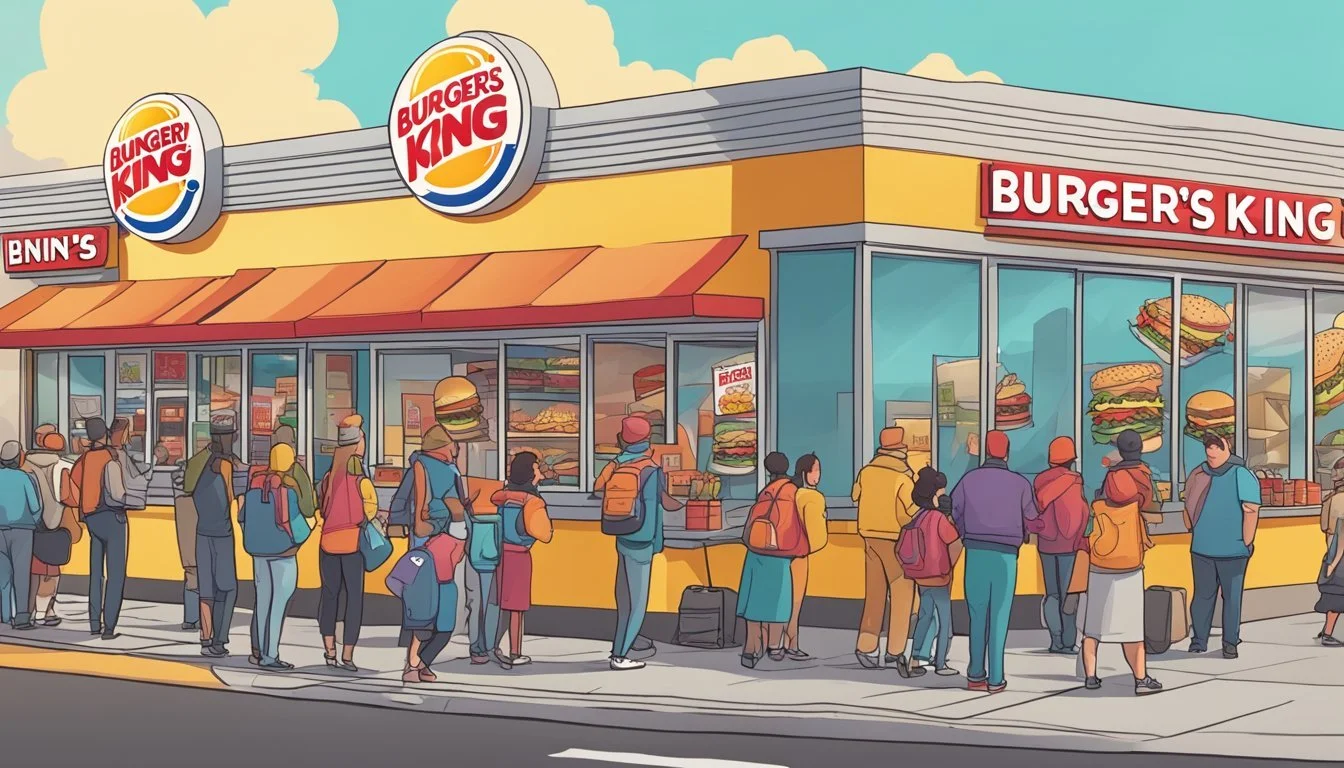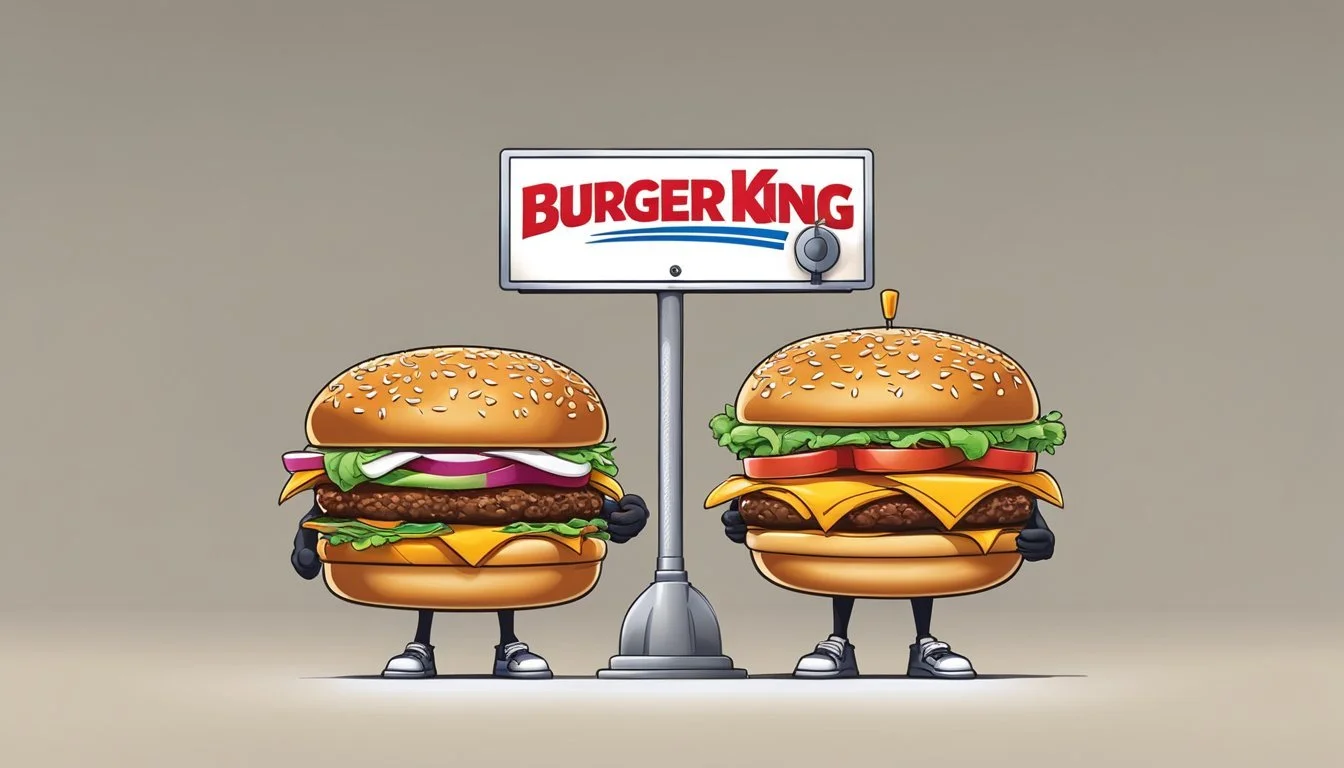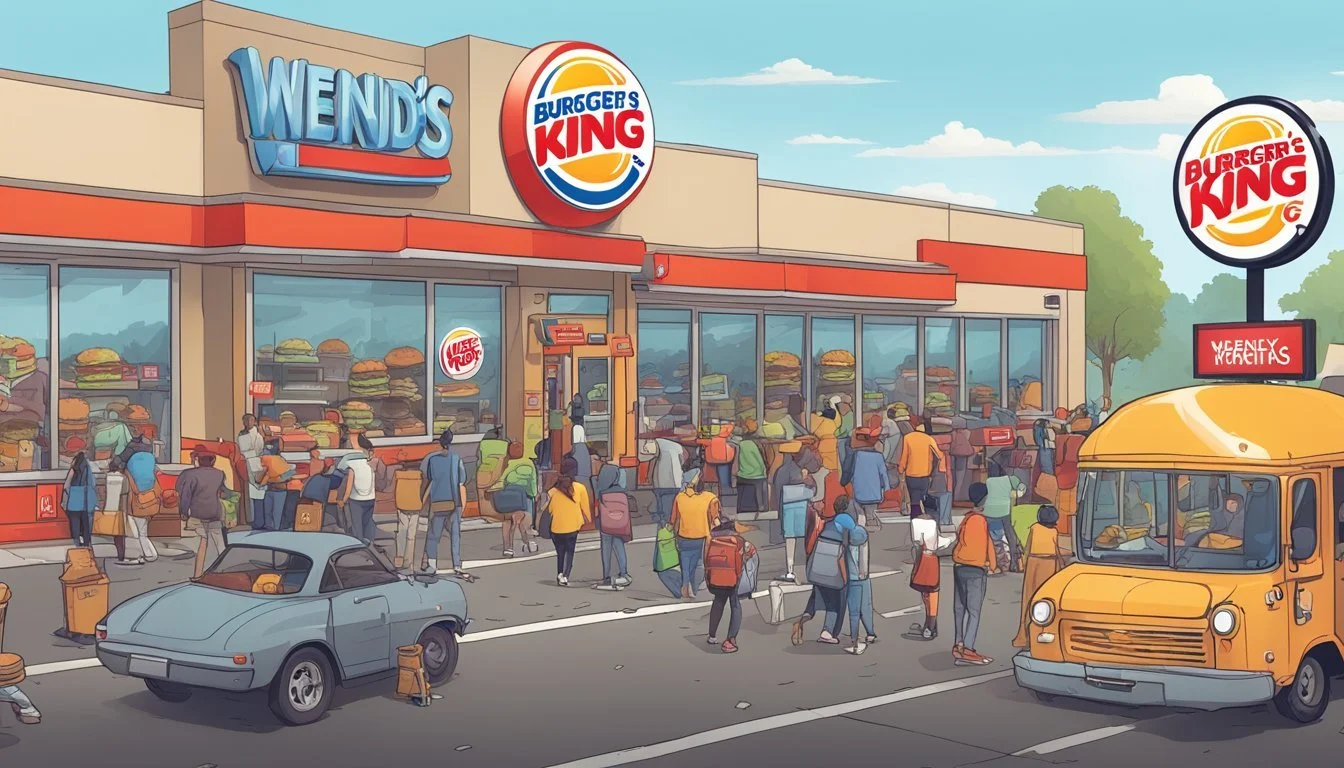Burger King vs Wendy's
A Comprehensive Comparison of Fast Food Giants
In the fast-food industry, Burger King and Wendy's stand as titanic competitors, each boasting a devoted customer base and a distinct approach to quick service dining. The long-standing rivalry between these chains centers around which can deliver the better burger experience. Burger King brings to the table its signature flame-grilled patties and the iconic Whopper, touting not just taste but also tradition. Its menu variety often gravitates towards larger, more indulgent burger options, aiming to satisfy hearty appetites.
Wendy's, on the other hand, presents a different appeal with its never-frozen beef patties and the promise of a fresher taste. The chain is known for its square burgers, a visual trademark that sets them apart in a sea of round buns. Moreover, Wendy's also markets itself as providing higher quality fast food with competitive pricing. Their breakfast menu, for instance, has been highlighted as not only offering affordability but also a direct challenge to Burger King's breakfast offerings, in both composition and cost.
Selecting the superior burger joint is not a straightforward task, as it involves a complex interplay of factors such as menu diversity, pricing, nutritional content, and personal taste preferences. Consumers weigh the value of their meals against the satisfaction received. While one chain may offer a more cost-effective breakfast biscuit, the other might compensate with a more generously sized burger. Ultimately, the better burger joint may come down to individual criteria, with loyalty to a particular brand's flavors or principles tipping the scales.
Historical Overview
The competition between Burger King and Wendy's goes back decades, with each brand holding a storied place in fast-food history.
Founding Stories
Burger King was established in 1954 in Miami, Florida, by James W. McLamore and David Edgerton. They saw the potential in the fast-food market and opened their first restaurant, originally named "Insta-Burger King." Their innovative Insta-Broiler oven gained attention for cooking burgers with a unique flavor.
Wendy's founder, Dave Thomas, opened the first Wendy's restaurant in Columbus, Ohio, in 1969. He named the chain after his daughter, Melinda Lou "Wendy" Thomas. Unlike many competitors, Wendy's focused on fresh, never-frozen beef and the signature square-shaped hamburger patties which made its products stand out early on.
Brand Evolution
Burger King expanded rapidly both domestically and internationally. Known initially for its flame-grilled burgers, the Whopper, introduced in 1957, became the cornerstone product defining the brand.
Wendy's differentiated itself with a focus on quality and freshness, as well as the innovative addition of a salad bar in the 1970s. It grew to become known for witty and memorable advertising campaigns and was the first to introduce the concept of a "value menu" in the 1980s.
Both brands continue to evolve, with each having switched up logos and slogans multiple times in efforts to stay contemporary and relevant in the ever-competitive fast-food market. Wendy's and Burger King have both emphasized breakfast menus more recently, but Wendy's menu items in this category have generally been priced lower than Burger King's offerings.
Menu Offerings
When evaluating Burger King and Wendy’s, it becomes clear that each has its distinct menu offerings that cater to a variety of tastes. The focus on innovative items, such as the Impossible Whopper at Burger King and Wendy’s signature spicy chicken nuggets, underscores their commitment to variety and flavor.
Burgers and Specialty Items
Burger King is renowned for its Whopper, a flame-grilled beef patty topped with lettuce, tomato, mayonnaise, ketchup, pickles, and sliced white onions, served on a sesame seed bun. Their menu also offers the Bacon King, loaded with thick-cut smoked bacon atop two beef patties. A distinctive item is the Impossible Whopper, a plant-based alternative designed to mimic the taste and texture of meat.
Wendy’s counters with its own set of burger options, primarily featuring its signature burger, the square-pattied Wendy’s Single. A step up is their Baconator, a multi-layered bacon and beef creation that has become a fan favorite. Wendy’s is notable for using fresh, never frozen, North American beef and for distinguishing their burgers with red onion slices, providing a slightly bolder flavor.
Sides and Alternatives
Both fast-food chains offer a variety of sides. Wendy's boasts its famous sea salt fries, as well as unique options like rich and meaty chili and baked potatoes, which are not commonly found at other burger joints. Their Chicken Nuggets, especially the spicy variety, stand out as a flavorful alternative to beef.
Burger King satisfies side cravings with options like golden fries and chicken fries, a twist on traditional nuggets. They also cater to chicken lovers with an array of chicken sandwiches available in crispy, grilled, and spicy versions, providing diverse flavors and textures to complement their entrees.
Drinks and Desserts
For drinks, both chains offer an assortment of sodas, iced teas, and coffees, ensuring that patrons can find the perfect beverage to accompany their meal. Burger King and Wendy’s feature signature desserts too; Burger King’s creamy hand-spun milkshakes and Wendy’s famous Frosty, a cross between a milkshake and soft-serve ice cream, are standout treats that appeal to the sweet tooth in everyone.
The breakfast menu at Wendy's also garners attention with items priced competitively, such as the bacon, egg, and cheese biscuit. Meanwhile, Burger King's breakfast selection includes a similar lineup, ensuring that early risers can start their day with hearty sandwich options. Each establishment ensures that their breakfast options provide a quick, satisfying start to the day.
Nutritional Value
In the competition between Burger King and Wendy's, a critical aspect to consider is the nutritional value of their offerings, which plays a crucial role in consumer choices. Specifics on meat quality and caloric content reveal how each brand aligns with dietary considerations.
Meat Quality and Sources
Burger King's signature item, the Whopper, contains 3.389g of polyunsaturated fat. The chain emphasizes flame-grilled flavor and uses beef patties that are not described as never frozen, marking a difference in meat handling practices. In contrast, Wendy's takes pride in their claim that their beef patties are fresh, never frozen, which they suggest may enhance both flavor and nutritional value. Wendy’s hamburgers contain 1.55g of polyunsaturated fat, which is substantially lower than Burger King's offer.
Caloric Content of Menu Items
While both fast-food chains offer a variety of menu items, their caloric content is an essential factor for health-conscious consumers. For instance, the caloric content of a standard Wendy's hamburger stands out as significantly less indulgent compared to the Burger King Whopper. The comparative figures are as follows:
Burger King Whopper (no cheese): High calorie count per serving.
Wendy's Hamburger: Lower calorie count per serving.
In terms of protein, both chains provide substantial amounts in their burgers, contributing to their nutritional profiles and satiety levels for consumers. However, specific nutrition figures for the year 2024 are not provided here, and consumers should check the most updated nutritional information available from the chains for the most accurate data.
Burger Construction
When assessing the quality of a burger, the architecture is a pivotal factor; this includes the bun and toppings as well as the cheese and condiments that provide the unique flavor profile and structural integrity of the burger.
Bun and Toppings
Burger King utilizes a sesame seed bun that is not toasted, providing a soft texture that juxtaposes with the crunch of the toppings. Their Whopper is typically garnished with lettuce, tomato, ketchup, mustard, pickles, and white onion slices—ingredients that contribute a classic burger experience.
Toppings for Burger King's Whopper include:
Lettuce
Tomato
Ketchup
Mustard
Pickles
White onion slices
Wendy's, on the other hand, often opts for a toasted bun, which adds an extra textural element to their burgers. The use of red onion slices introduces a stronger flavor and acidity, fortifying the burger's profile. Lettuce, tomato, and pickles are common in Wendy's burgers as well, rounding out a well-constructed hamburger.
Toppings for Wendy's burgers typically feature:
Lettuce
Tomato
Pickles
Red onion slices
A toasted bun for added texture
Cheese and Condiments
The choice of cheese is crucial for a harmonious burger. Burger King generally incorporates a slice of American cheese that melts over their patties, creating a creamy and salty flavor that complements the overall taste. Common condiments include ketchup and mustard, contributing both tanginess and a mild heat.
Cheese and Condiments at Burger King:
American cheese
Ketchup
Mustard
Wendy's also uses American cheese but tends to apply a larger quantity, which results in a burger that is juicy and rich in flavor. Condiments are applied with a liberal hand, ensuring each bite is imbued with their signature taste.
Cheese and Condiments at Wendy's present:
A generous slice of American cheese
Ketchup and mustard for a familiar yet pronounced taste
Both chains have honed their burger construction to deliver consistency and flavor that align with their brand identities.
Pricing and Value
In the competition between Burger King and Wendy's, consumers often weigh the affordability and value of menu offerings. Both brands provide a range of prices and special deals, which can sway customer choice.
Menu Deals and Discounts
Burger King often entices customers with a variety of deals and discounts, prominently featuring options such as mix-and-match promotions or limited-time deals on signature items like the Whopper. These value deals are aimed to offer a lower entry price and more food for the money, enhancing the perceived value.
Wendy's, on the other hand, has responded to market competition with its own set of deals. For instance, the brand occasionally offers discounts through mobile app deals, typically focusing on their popular items such as the bacon burger.
Cost Comparison
Burger Meals:
Wendy's bacon burger is compared to a similar offering from Burger King, with prices ranging typically around $4.79 to $4.99 for a meal.
Breakfast Items:
Wendy's bacon, egg, and cheese biscuit is priced at approximately $3.19, while Burger King's counterpart comes in at about $3.79.
Lowest Priced Burgers:
Wendy's junior hamburger starts at a low price of $1.49, allowing customers to enjoy a burger without a significant financial investment.
Highest Priced Burgers:
For those seeking a more indulgent option, Wendy's triple bacon jalapeño cheeseburger might be a more expensive choice at $8.59.
When considering the special sauces and unique ingredients each brand offers, like Wendy's red onion for added flavor compared to Burger King's white onion, customers find that value goes beyond cost and includes the quality of ingredients and the overall taste experience.
Brand Identity and Marketing
In the competitive fast food landscape, Burger King and Wendy's have developed distinct brand identities and marketing strategies that resonate with their customer bases.
Advertising Campaigns
Burger King has consistently positioned itself as a brand with a bold and provocative approach to advertising. They leverage edgy and humorous campaigns that often poke fun at competitors or embrace imperfection, as seen in their moldy Whopper campaign. Their key messages aim to evoke a sense of confidence and non-conformity.
In contrast, Wendy's has carved out a niche as a witty and irreverent brand, particularly on social media. Their marketing often includes direct engagement with consumers and competitors, creating a persona that feels personal and responsive. Wendy's ability to maintain a distinctive and snappy tone, especially on platforms like Twitter, keeps the brand relevant and top-of-mind.
Customer Perceptions
Consumer perceptions differentiate these fast food chains significantly. Burger King is often associated with its assertive tone and atmospheric in-store experience, which tends to skew towards a younger demographic that appreciates the brand’s willingness to push boundaries.
Wendy's, on the other hand, has cultivated an image of a more 'genuine and transparent' establishment, which appeals to customers valuing authenticity and quality. This is reflected in the success of their marketing efforts, with tactics that have contributed to overtaking Burger King as the nation’s No. 2 burger chain by sales, suggesting that their brand resonance with consumers is strong and effective.
Customer Experience
When choosing between Burger King and Wendy's, patrons often consider how the experience at each establishment differs, specifically in terms of service speed and quality, as well as restaurant cleanliness and ambiance.
Service Speed and Quality
Burger King and Wendy's are both known for their quick service, a trademark characteristic of the fast-food industry. Wendy's prides itself on its "fast, friendly service," aiming to deliver a customer's order accurately and swiftly. At Burger King, the commitment to service is also strong, with a system designed for efficiency. However, diners report that experiences can vary by location, with some outlets managing high volumes better than others.
Order Accuracy: One can expect high levels of order accuracy from both chains due to their standardized procedures. Nevertheless, occasional discrepancies between orders and what is served can occur.
Restaurant Cleanliness and Ambiance
The ambiance and cleanliness of a fast-food restaurant contribute greatly to customer satisfaction. Wendy's tends to maintain a modern and clean interior with a focus on creating a welcoming atmosphere. Burger King's ambiance might vary more widely, but in general, it emphasizes a bold and inviting dining area.
Cleanliness: Both chains typically uphold satisfactory levels of cleanliness, which reflects on their dedication to customer health and comfort.
Atmosphere: Comfortable seating and well-maintained spaces are common at Wendy's, which aims to provide a pleasant dining experience. Burger King also makes efforts to offer a relaxing environment for its patrons to enjoy their meals.
Social and Environmental Impact
Burger King and Wendy's both play significant roles in the fast-food industry, not only through their menus and services but also in how they impact society and the environment. Their efforts in sustainability and community involvement form a crucial part of their respective corporate identities.
Sustainability Efforts
Burger King has made headlines with its sustainability campaigns, but evidence suggests its endeavors might be less comprehensive than required to make a significant environmental difference. It faces criticism for limited actions, especially when comparing the environmental impact of beef production to more sustainable protein sources.
Beef Sustainability: Beef is a core product for Burger King, yet it is well-documented that beef production demands extensive land use and water compared to poultry and pork.
Waste Management: Both chains are challenged with reducing waste, not only in food but also in packaging.
Wendy's seems to have taken a more active approach by engaging in helpful practices and reportedly surpassing Burger King in sales, which might suggest a correlation with their environmental initiatives. Wendy's system sales growth could imply that consumers appreciate their efforts toward sustainability.
Sourcing and Certifications: Wendy's has received attention for its sourcing policies, seeking certifications to ensure responsible procurement.
Packaging Innovations: Both chains are exploring packaging options that are more planet-friendly and reduce the environmental footprint.
Community Involvement
Both Burger King and Wendy's contribute to their communities and emphasize corporate social responsibility as part of their brand ethos.
Charitable Activities: They donate to various charitable causes and engage in community service, helping to fortify their brand images and foster goodwill among consumers.
Local Partnerships: By partnering with local entities, they aim to have a positive impact and support those around their operational areas.
The consideration for sustainability and engagement with the community is an ongoing process for both companies, indicative of broader trends in the food service industry where corporate responsibility increasingly aligns with consumer values.
Comparative Analysis
This section evaluates how Burger King and Wendy's stand against each other, looking specifically at their signature menu items and the loyalty they command among customers.
Head-to-Head Menu Item Battle
When comparing Burger King's Whopper to Wendy's Double Stack, several factors come into play. The Whopper, known for its flame-grilled patty, appeals to those who favor a smokier taste. Wendy's, on the other hand, prides itself on delivering a fresh, never-frozen beef burger, implying a focus on quality. Here's a quick rundown:
Burger King Whopper Wendy's Double Stack Patty Flame-grilled Fresh, never frozen Price Typically more expensive Generally more affordable Taste Profile Smoky flavor Classic, fresh beef taste Quality Perception Value-focused Quality-focused
Though both burgers satisfy, the winner in terms of quality is often perceived to be Wendy's due to their commitment to fresh beef.
Brand Loyalty and Repeat Business
Burger King's iconic status and widespread availability have fostered a dedicated customer base. Their marketing campaigns and product offerings aim at consistent value which retains repeat business. Wendy's garners loyalty through their fresh ingredients and quality-anchored messaging. This commitment propagates a perception of a higher quality option, often influencing customer return rates. The battle for brand supremacy continues, but when it comes to commanding loyalty through quality, Wendy's often has the edge.
Conclusion
When diners choose between Burger King and Wendy's, they weigh various factors, including taste, menu diversity, and value for money. Burger King, known for its flame-grilled burgers, offers a signature taste that has a dedicated following. Fans of the Bacon King and their variety of bacon burgers are drawn to Burger King for its distinct flavor profile.
On the other hand, Wendy's is favored for its use of fresh, never frozen beef and a commitment to quality ingredients. With popular choices like the bacon, egg, and cheese biscuit, Wendy's also competes strongly in the breakfast segment, often at a lower price point than Burger King.
Price Comparison:
Wendy's bacon, egg, and cheese biscuit: ~$3.19
Burger King's equivalent: ~$3.79
In addition to their core menu items, both chains have added to their menus to appeal to a broader market, including chicken nuggets and an array of sauces.
Consumer Experience:
Burger King: Flame-grilled flavor
Wendy's: Freshness and made-to-order meals
Ultimately, the choice between Burger King and Wendy's may boil down to individual taste preferences and the importance of pricing. Each brand offers unique dining experiences that attract different audiences, making them both strong competitors in the fast-food industry.








